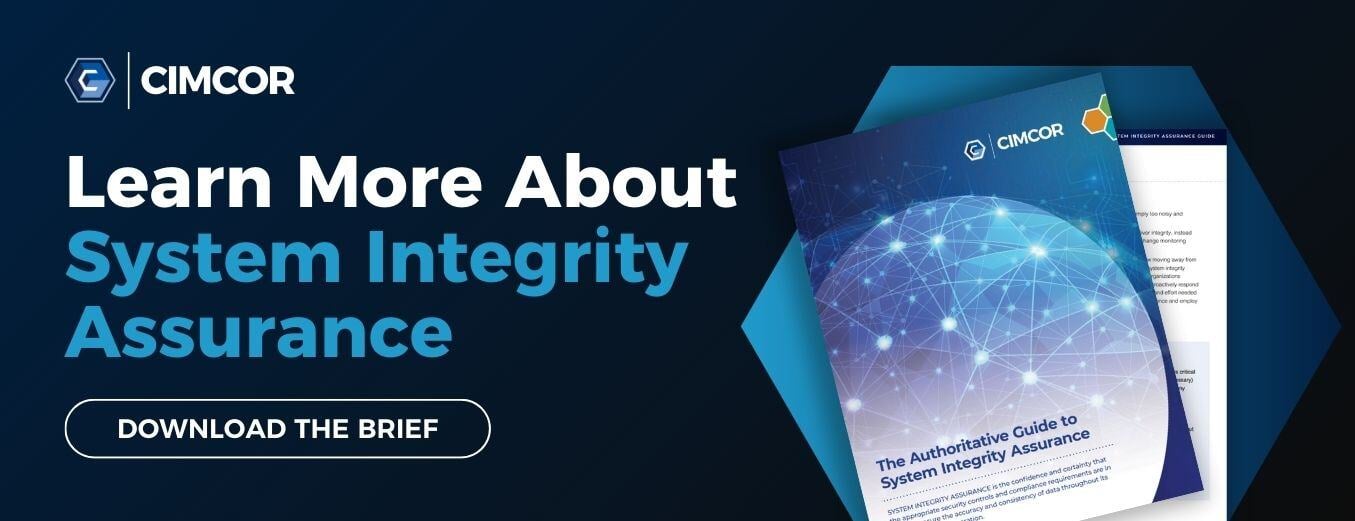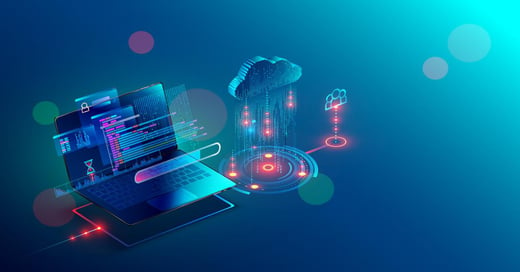In a recent podcast interview with Zack Hack, Host of Cybercrime Magazine, Cimcor President and CEO, Robert E. Johnson III goes back to the basics in discussing how to secure your infrastructure. The podcast can be listened to in its entirety below.
Welcome to The Data Security Podcast sponsored by Cimcor. Cimcor develops innovative, next-generation file integrity monitoring software. The CimTrak Integrity Suite monitors and protects a wide range of physical, network, cloud, and virtual IT assets in real-time while providing detailed forensic information about all changes. Securing your infrastructure with CimTrak helps you get compliant and stay that way. You can find out more about Cimcor and CimTrak on the web at cimcor.com/cimtrak.
Q: Joining us today is President and CEO, Robert E. Johnson, III. Robert has been a pioneer in the development of next-gen system integrity monitoring, self-healing systems, and cyber security software. Robert, welcome back to the show. Nice to have you aboard.
A: I appreciate the opportunity to be back on your show, Zack. Always exciting and fun to be with you again.
Q: Today, we're going back to the basics: securing your infrastructure. We hear a lot of companies talking about the challenges for having a secure infrastructure. But what does that mean?
A: Well, Zack, that's a really broad question. But I think the core of our frustration throughout the security industry is that, despite our best efforts, the industry hasn't solved this issue of cyber security. In fact, in a recent survey, the average time from infection to detection, to the remediation of any cyber breach, on average, is 287 days. Now, let's think about this. This means that if you are infected on January 1st, that the entire situation hasn't been remediated until October 14th. Now, that's the average. And this is even though all these large enterprises already have in place, what they feel, are the best-in-class cybersecurity tools. Furthermore, there are one million new variants of malware being created every day.
The traditional EDRs and XDRs and antivirus tools are doing some absolutely amazing work because they leverage AI to detect and classify about 450,000 of those threats every day. So, even though that's very impressive, and, in my opinion, almost you can consider it a feat of human engineering. What about the other 550,000 that are being created every day? Those 550,000 pieces of malware have simply slipped through the cracks and those, Zack, are really the core of our problems. Many times you'll hear a security professional explain that. "Oh, you know, goodness! We've been the victim of a zero-day attack!" If you look at the data, the truth is, they were likely the victim of a 287 days ago attack.
Q: If the most popular, or, as you say, the best-in-class cybersecurity, tools, aren't helping, they're not working. What can an organization do?
A: I believe there needs to be an entire paradigm shift in the industry. The industry spends a lot of time trying to identify and classify every single threat that's out there. In my opinion, there are just too many emerging threats. It's impossible to keep up with the hackers if we continue to take this approach. In fact, if you think about it, we aren't doing much more than engaging in a high-tech version of whack-a-mole.
We need to reverse our thinking and instead focus on the integrity of our key assets. This involves understanding all the changes to a system from this established and trusted baseline. Why is this important? Well, think about it. How do you hack a system without modifying it? Almost all hacks, almost all breaches, start with a change. In fact, most network outages also start with a change of some sort. So if you can understand all deviations from an established and trusted baseline, that provides you unprecedented security. But as a bonus, it also provides increased uptime, availability, and reliability for your entire infrastructure.
Q: You talk about working from a trusted baseline as one of the first steps. How do organizations get around this? How do they accomplish this?
A: It can seem overwhelming. You know, typical systems have thousands of files on them, and if you have hundreds of systems or thousands of systems, identifying unexpected changes manually, well, it's near impossible. In fact, it's worse than attempting to find a needle in a haystack. At Cimcor, our engineers have developed a method to establish this trusted baseline of all of your IT assets both quickly and easily. This allows you to get real-time insight into unexpected changes to your infrastructure, while automatically filtering out all the changes that actually should occur, such as patches and updates.
This lets you focus only on the changes that actually matter:
- Unexpected changes
- New malware
- Internal threats.
Our product is called the CimTrak Integrity Suite, and I think that it is perhaps the best new weapon that you can add to your arsenal to defend against new and emerging threats. We're very excited about our technology, and we would love the opportunity to provide a trial or a demo to anyone in your audience that is looking for a better way to secure their organizations.
Q: So what's the best way of getting in touch with you?
You know the best way of learning more about our product is simply: go to www.cimcor.com and Cimcor is spelled C as in cat, I M C O R.com.
Q: Pleasure speaking with you once again, Robert. We'll talk to you really soon. Thanks for joining us on the show.
A: Thank you, Zach, and look forward to joining your show again.
Tags:
Podcast.png?width=50&height=50&name=Robert%20(1).png)
October 4, 2022




